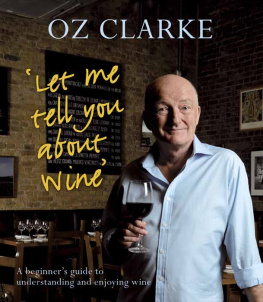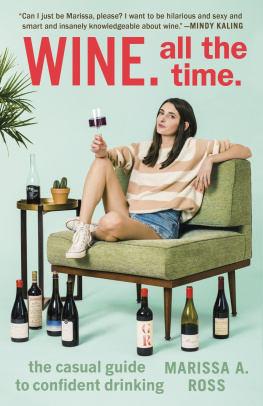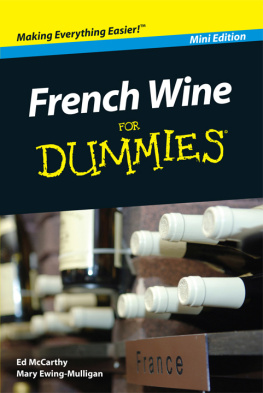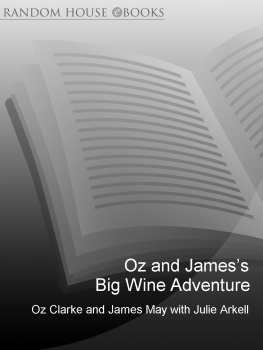THE INFINITE IDEAS
CLASSIC WINE LIBRARY
Editorial board: Sarah Jane Evans MW and Richard Mayson
There is something uniquely satisfying about a good wine book, preferably read with a glass of the said wine in hand. The Infinite Ideas Classic Wine Library is a series of wine books written by authors who are both knowledgeable and passionate about their subject. Each title in The Infinite Ideas Classic Wine Library covers a wine region, country or type and together the books are designed to form a comprehensive guide to the world of wine as well as an enjoyable read, appealing to wine professionals, wine lovers, tourists, armchair travellers and wine trade students alike.
The series:
Port and the Douro, Richard Mayson
Cognac: The story of the worlds greatest brandy, Nicholas Faith
Sherry, Julian Jeffs
Madeira: The islands and their wines, Richard Mayson
The wines of Austria, Stephen Brook
Biodynamic wine, Monty Waldin
The story of champagne, Nicholas Faith
The wines of Faugres, Rosemary George MW
Cte dOr: The wines and winemakers of the heart of Burgundy, Raymond Blake
The wines of Canada, Rod Phillips
Ros: Understanding the pink wine revolution, Elizabeth Gabay MW
Amarone and the fine wines of Verona, Michael Garner

Copyright Elizabeth Gabay, 2018
The right of Elizabeth Gabay to be identified as the author of this book has been asserted in accordance with the Copyright, Designs and Patents Act 1988.
First published in 2018 by
Infinite Ideas Limited
www.infideas.com
All rights reserved. Except for the quotation of small passages for the purposes of criticism or review, no part of this publication may be reproduced, stored in a retrieval system or transmitted in any form or by any means, electronic, mechanical, photocopying, recording, scanning or otherwise, except under the terms of the Copyright, Designs and Patents Act 1988 or under the terms of a licence issued by the Copyright Licensing Agency Ltd, 90 Tottenham Court Road, London W1T 4LP, UK, without the permission in writing of the publisher. Requests to the publisher should be emailed to the Permissions Department, .
A CIP catalogue record for this book is available from the British Library
ISBN 978-1-910902-71-4
Brand and product names are trademarks or registered trademarks of their respective owners.
All web addresses were checked and correct at time of going to press.
Cover image Bernd Schmidt/Alamy Stock Photo.
Typeset by Digitrans Media, India
INTRODUCTION: THE UGLY DUCKLING
In 1975 Pamela Vandyke Price wrote that Pink wines are not among the great classics. Ros has made great strides since then, so that today, I would have to disagree.
Ros wine has benefited over the last twenty-five years from a boom in quality and production volume. Ross are often considered simple, fresh and undemanding, appealing to young, first-time drinkers otherwise intimidated by the complex world of reds and whites.
While this notion has been great for sales, it has not helped ross image. After a wine is promoted as simple, fresh and undemanding for twenty-five years, the idea takes hold. When combined with successful marketing, illustrating the beauties of a pink wine, often by the sea or pool, with a leisurely lifestyle of glamour and fun the role of ros might appear immutable.
But luckily, winemakers are creative. Now that the skills for producing good ros have been widely mastered, an ever-increasing number are doing something a little different. If oak, amphorae, battonage, maceration and grape varieties are used differently, how might ros change? Often the new styles produced are so different to the ros wines most people know, that they have been difficult to sell or fail to receive acknowledgment. Darker ross can lose marks in competitions and be commercially unsuccessful because their colour is unfashionable. Complex ross suffer as they are too demanding.
Economics and marketing are both of great importance in the world of ros. While often a winemaker continues to produce wines in his commercial style to pay the bills he may also sell a few cases of the special ros to those who appreciate it. These unicorn ross remain largely unknown, unreported and unrecognized, and are often difficult to find. A treasure trail through connections, friends of friends, journalists and local wine bloggers has helped me discover many that remain hidden to most consumers.
As I looked into the range of ross available, I realized that I first needed to answer the question What is a ros? This sounds simple, but every rule has its exceptions.
Ross are pink? Well, yes, but some ross are so pale they are almost white with just the faintest tinge of creamy blush. Other ross are so dark, they are almost red. Some countries even have names for different colours of ros, to indicate different styles. Ros is a catch-all name.
Ross are made like a white wine? Yes, but . Unlike red wines, ross are not fermented on the skins, although some start fermentation on the skins and are then bled off. But they are not white wines, and they have more in common with amber (or orange) wines if they have extended skin maceration.
Researching this book has been a voyage of discovery, with many ross exciting me as much as good red and white wines. Far from feeling I fully explored ros, I realize there are many more ross: styles previously unknown; ross known only to locals; ross exclusively for export; ross newly created. Sometimes I had to press producers to show me wines that are not usually available.
As ros is increasingly recognized as a serious wine, its potential quality is leading to a growth in niche wines. Some producers are returning to local traditions and varieties, others are exploring and creating new styles. Looking at ros in more detail is vital in enabling consumers to be aware of the variety of serious and beautiful styles available and to enable them to look beyond its ugly duckling past. I look forward to the day when more ross achieve that wow factor now given only to great reds and whites, to when restaurant wine lists for reds and whites are rivalled by their selection of ross.
As Ruth Ellen Church wrote, long ago in 1966, If you think pink, why not adventure a bit, for every wine growing country produces pink wines. Of course, with thousands of ros wines produced all over the world it has been impossible to taste all. I have tried to highlight the amazing variety and potential for quality, and the inventiveness of winemakers. With the limited space in this book, it has been impossible even to include every ros I have tasted.
For me, ros is moving forward and becoming more exciting. I hope this book not only reflects my growing enthusiasm, but also draws the reader in to seek and discover more ross.
This book is an acknowledgment of the energy and creativity of winemakers who are experimenting with and pushing the boundaries of ros-making.
THE HISTORY OF ROS WINE
In the oldest written reference to winemaking, the book of Genesis records that Noah, a man of the soil, proceeded to plant a vineyard. Geographically this fits in with the oldest physical remains of winemaking currently known, which are located in Georgia, north of Mount Ararat, with evidence of winemaking in large clay jars (similar to modern kveri), dating back to 6000 BC. His wine must have been potent stuff, as the next sentence refers to Noahs drunkenness. Since later descriptions of Mesopotamian wine do not refer to pressing the wine to extract colour and tannins, we can guess that Noah was probably fermenting the juice with the stalks, skin and pips.
Next page
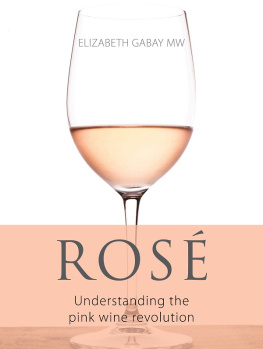
![Jon Bonné - The New French Wine [Two-Book Boxed Set]: Redefining the Worlds Greatest Wine Culture](/uploads/posts/book/443558/thumbs/jon-bonn-the-new-french-wine-two-book-boxed.jpg)
